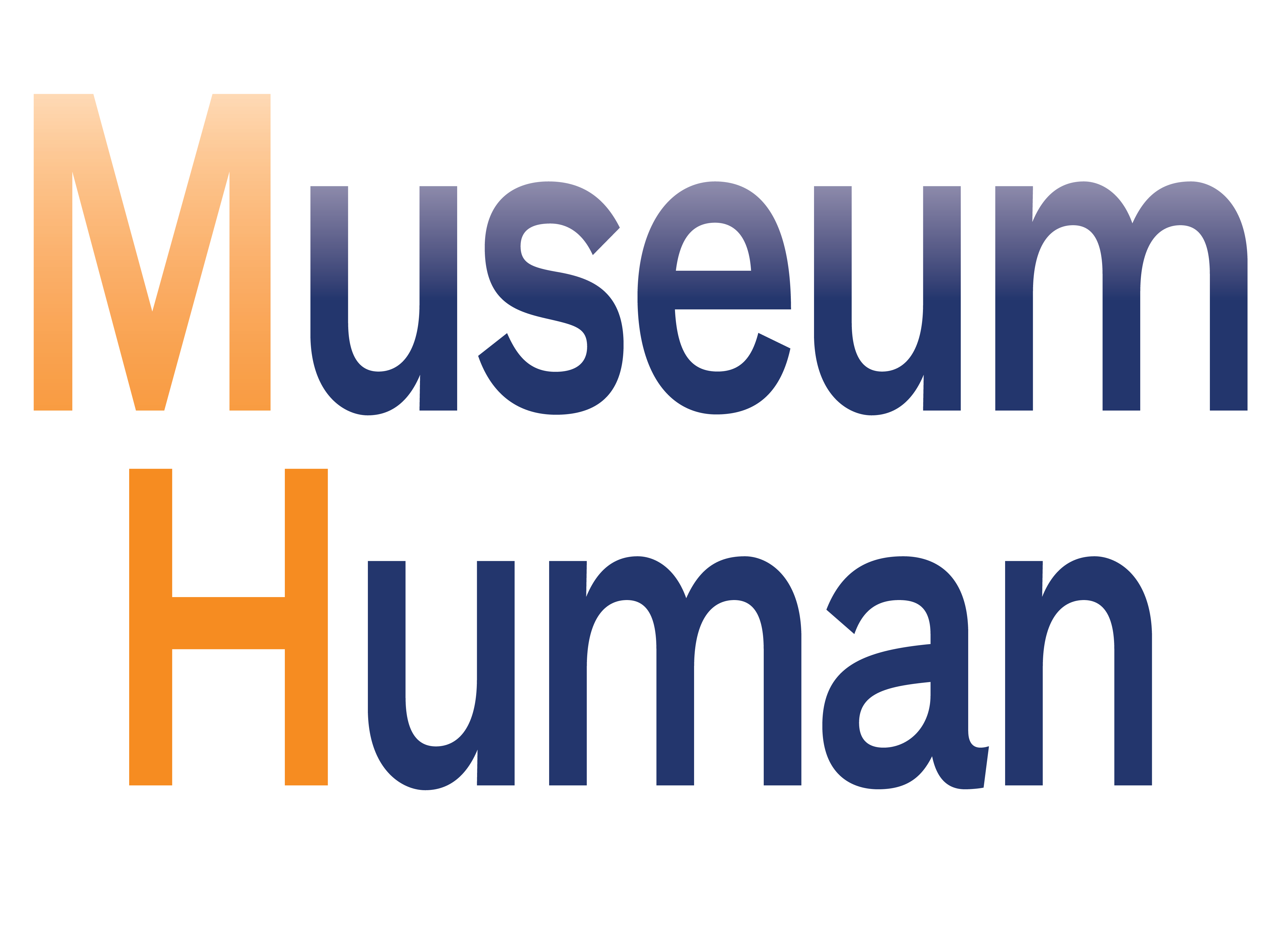
As the Great Exhaustion continues apace, can museum workers get past cultural tyrannies?
If you're reading this and not a subscriber to Museum Human, consider scrolling to the bottom and signing up now—it's free and is the only way to read the site's longer weekly post on the organizational culture of cultural organizations and to learn about upcoming subscriber-only events.
I wanted to start with a quick follow-up to my recent post about genius and the museum field. I don't like to quote people who reach out without arranging it ahead of time, so I'll merely mention the interesting point someone made to me—that sometimes a genius is defined by not having to do admin. This, of course, both defines the genius and excludes the non-genius or the assistant-to-genius. Something to think about.
I also wanted to point out this Medium piece on getting into "flow," because it points out the many things that seem an ask too far when we're all too busy—perhaps only geniuses can get into this kind of flow. How many of us in museum work thought of ourselves as geniuses and then had to give up our ambition, as per this piece in New York magazine's site The Cut?
There’s an illusion with work that everything you give up now, all the stolen time commuting, working overtime, checking your email and Slack notifications after hours, will somehow earn you freedom and capital in your later years. But the farce of “work hard now, play later” has been exposed for millennials and Gen-Zers; most of us will be working until we die. It’s hard to maintain your ambition in the face of that reality.
Speaking as a Gen X-er, it's true for many of us as well.
And now, on to the links!
One: This article in Fast Company says that our org culture needs a new relationship between managers/leaders and workers. Well, duh, but the points are good ones:
Too many employers view their employees from a capitalistic perspective—as wages on which to gain a return. This, in turn, causes employees to reciprocate by viewing the employer as a place where they need to maximize their own personal gain. This leads to a dynamic like a pre-divorced couple—neither trusts the other, each is constantly looking for angles.
As with all paradigm shifts, this one starts in the mind. When company leadership treats employees as truly equal partners, the thought stops being “how can we pay less and get more” and becomes “how can we take the best care of our employees." ...
A new social code is not just a slogan, but also a new configuration that is becoming more prominent.
By doing the right thing and treating people with respect and encouraging individuality and autonomy, the employer-employee relationship dynamic is more balanced, and people feel free to be themselves. And good things follow:
We are more passionate about our work. Wherever we are, we want to feel that we own our destiny. Individuality brings employees that feeling, and we naturally have more passion for our work.
We enjoy coming to work. When we feel empowered at work, we look forward to coming in—and we don’t think about leaving.
We make a greater contribution. When we feel we have autonomy at work, we contribute more. This is obvious to many, as we’ve seen with my son’s class picnics, but it also has been backed by research.
Interesting that the article uses "we," when so many Harvard Business Review pieces are aimed at managers and leaders, the "they."
Two: I mentioned the new book from Mollie west Duffy and Liz Fosslein a couple of weeks back, but their article-writing media tour keeps tossing out good pieces, like this one in HBR asking managers how they're contributing to helping prevent exhastion from workplace change. The first suggestion the authors make is for managers to press pause on work—but, as I've mentioned before, is that really doable in our current museum workplaces? And do managers truly work with the change in the organization or provide their own resistance to it—which can actually complicate worker wellness?
Three: Speaking of HBR, here's a piece on how to be compassionate manager, with a helpful distinction drawn between empathy and compassion:
Instead, learn from your people what matters to their well-being and take specific steps to improve conditions for them and raise group morale. As you begin to make headway, you can start to point out which things are working better and then start to tackle the next area of interest. You won’t have all the answers, be able to change everything about the organization that’s bothersome to your team, or help them resolve all their struggles, so don’t create false hope or expectations — explain which things are within your purview to change. And don’t expect that everyone will be grateful for what you’re doing or how much effort you’re expending on their behalf. It’s not their job to appreciate you, but the team’s resilience, longevity, and esprit de corps are likely to increase.
For example, one manager came up with a creative gambit that did not require any official permission or resources. When her people were feeling burned out by the challenges of the work and the organizational environment, she helped them each identify a “passion project” that supported the team’s goals and then carved out dedicated implementation time. The employees got the benefit of scheduled independent time for deep work, an opportunity to learn about things that interested them, and the sense of personal commitment and achievement.
I'm always a fan of giving workers back their time to pursue what they—with their experience—think they can do best that can also contribute to the organization. This point from the HBR article addresses lack of time and other resources:
You might need to get creative in substituting for resources if they’re not provided. For instance, even if you’re not getting the training budget you need, you may be able to find podcasts or online tutorials on the subject that you can share with your team to help move their knowledge forward. If you’re facing a hard and challenging deadline, actively work with your team to learn who can dedicate more time now and set up internal swaps to help them manage time and participation. ...
This next section is a bit interesting, as usually happens when the business press gets into supposedly "soft" skills:
Compassion is not about being “nice” or looking the other way when there’s a problem or someone isn’t up to standard. It requires understanding the situation deeply so you can make the best business decision for all parties at the time, which sometimes means taking employees to task for work they haven’t completed or behavior that’s ineffective.
Certainly, preserve everyone’s dignity by giving them the benefit of the doubt, helping them regroup and refocus, and guiding their efforts as necessary. But make clear what your expectations are and what the consequences will be if commitments or targets are not met. It will not feel good to people if they see you behaving unfairly toward different members of the team or acting as if you have personal favorites.
Four: Straight from the top, here's the CEO of Hershey on org-wide culture change:
… my fourth strategy in the vision was to further accelerate our culture. Hershey has an amazing culture. One of the things I love about the company, great people, hardworking, salt of the earth, values, integrity, people who want to make a difference both in the company and in their communities, very team focused and people focused. But I saw an opportunity for us to dial up our agility and our risk-taking, so that we could better seize opportunities.
Accelerate? Just what everyone needs, right?
When we started out and the pandemic hit, we established two key principles. One was that we were first and foremost going to focus on the physical, emotional, and economic wellbeing of our employees. And that became the framework for so many decisions. The second key principle was we decided that we could either manage this as a risk, or we could step back, look at what was happening and see where there were places that we could seize opportunity.
So faster but also caring more about worker well-being?
The interview continues with points about tragedy and opportunity (to meet customer needs—not quite as gross as it reads on first glance), so read at your own risk. Prepare yourself for a discussion about Twizzlers. But this final part is useful:
There’s been a big debate with, I think, a lot of people about I call it mandate versus motivate. I think everybody started saying, well, we’re going to mandate people come back to the office. I think what we quickly learned was people aren’t going to be mandated. They have other options. They can work remotely. We quickly switched our focus to how do we motivate people? What is it that they want when they come in the office? It’s very different than before. We’ve really heard them say there were three key things. It was about: this is their time to engage, to really be deeply engaged, with their coworkers. So they want to make sure they have the opportunity to do that. This is their time to be connected. When they’re at home and they’re isolated, even though they like the flexibility, they want connectivity and they want the office to be fun. We’ve put in place a lot of different things to try and create that. Whether it’s free pizza Wednesdays, which started getting people in on one day. Let’s get together for lunch. Breakfast networking sessions, a lot of different things that can informally bring people together.
We focus, for our manufacturing employees, on much more flex time. I think our manufacturing employees previously were more interested in overtime and now we’re hiring more employees so that we can provide less overtime. We’re improving training and we’re looking at optimizing our employee value proposition for them. So I think all of those things are important. How do we help our employees to be their best whole self so they can live their best whole life, but also bring their best whole self to work?
Five: The org culture site Corporate Rebels had this contribution to the Great Resignation discussion:
But what are people looking for in a workplace? Is it free food, good coffee, ping pong tables, great healthcare, retirement benefits, attractive salaries, and generous bonuses?
Employers that are still attached to the idea that these are the benefits and perks that will attract and keep talent in the house need to understand better how human motivation works. While they may keep workers satisfied for a period of time, there are other important human needs that are not being fulfilled. …
So what do the authors propose? Their list starts with these helpful ideas:
- Ask Why (three times)
- Flexible Hours
- How You Work is Up to You
Six: I've become more interested in how the role of private equity in our lives—and our museums—is hampering change. You should really read this entire Mother Jones series on private equity (especially pieces here, here, here, and here), and then think about how PE affects our work—not just with financial titans on our boards, but their role in outsourcing companies, consultancies, AI, and more.
Seven: Let's get back to HBR and this counterintuitively-titled piece on how trust—when its used as a guidepost for whether to work with people on other teams or departments—can make workplace collaboration more difficult.
Eight: This article from the website Tablet dates from before the recent Apple employee return-to-office revolt and takes a more holistic view of Apple's reputation for being a place where workers can "think different." Branding beware!
Nine: Have you watched a great workplace idea go off the rails as it's scaled in your organization? This HBR piece has some useful insight about how data can be misread.
Ten: I'll end with something just about the museum sector and what might happen now that the AAMD's two-year look-the-other-way policy on deaccessioning has expired. (Check out my thoughts on deacessioning and museum org culture from last year here.)
Liberation
Liberation isn't just jargon, it's a way of detatching from expectations—in this case, our idea that there is a singular (or roughly shared) culture in museums, and that's the way it is. So many areas of museum leadership and management are tied up in our set ideas about institutional culture. If we read widely and listen and interrogate, we can end the stranglehold of set cultural norms and have a more just institutional for all workers and audiences.
Enjoy the links, and have a safe long weekend (for my US readers)—safe from harm, both physical and emotional.
If you're reading this and not a subscriber to Museum Human, consider signing up for a free subscription below—it's the only way to read the site's longer weekly post on the organizational culture of cultural organizations and to learn about upcoming subscriber-only events and communities. Thank you for reading!
cover photo by freestocks / Unsplash [description: several stacks of books on a desk or table]

Links of the Week: May 27, 2022: Culture Fit by Robert J Weisberg is licensed under a Creative Commons Attribution-NonCommercial-ShareAlike 4.0 International License.






